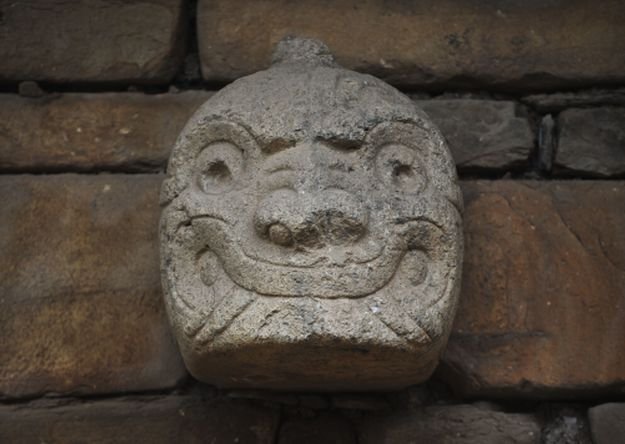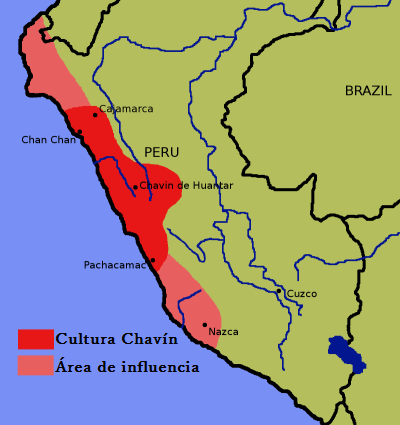
The Chavín culture was a civilization that developed in the Andes of northern Peru between 900 BC and 200 BC. The discoverer of the Chavín Culture is the archeologist Julio Tello who named it the parent culture or mother of the Andean civilizations of Peru, but archaeological discoveries show that the Caral culture is the oldest of the Andean civilizations and would be a focus of cultural irradiation . The Chavín culture was developed in the formative stage of the history of Peru and belongs to the cultures of the first Cultural Horizon.
The Chavín Culture had its origin in the temple called Chavín de Huántar, in the Department of Ancash, 300 km. north of the city of Lima. Probably the settlers of Chavin were originally from the jungle regions since they used a lot of jungle iconography as the figure of the jaguar, alligator and anaconda.
The archaeological site of Chavín de Huántar was built around the year 900 a.C. and was the religious center of the Chavin people. Now it is a World Heritage Site declared by UNESCO.
GEOGRAPHIC LOCATION
The Chavín culture is located in the Callejón de Conchucos on the eastern side of the Cordillera Blanca, on the banks of the Mosna River in the basin of the upper Marañon tributary, Huari Province, department of Ancash. This area is located at 3150 meters above sea level and encompasses the natural regions (life zones) Quechua, Jalca, and Puna.
It extended from Lambayeque to Ica on the coast and from Cajamarca to Ayacucho by the mountains. It is considered a Panperuana Culture since it spread through a large part of the Peruvian territory.

RELIGION
Historians can conclude through the art of the Chavin culture that there were deities worshiped, they were polytheists. The main deity is a large animal like serpents with long hair and fangs, this was considered to balance the opposite energies. There were several other deities that were worshiped by the people of the Chavin culture, including a deity represented by food through an alligator, and a deity of the underworld illustrated as an anaconda.
Another popular deity, which is commonly associated with several other cultures, such as ancient Egypt, was the cat-god. Little can be determined about the cat-god according to the Chavin culture, due to the multiple representations of felines in other ancient religious societies.

SCULPTURE
The sculptures in low relief on slabs, lintels and columns are characterized by an essentially zoomorphic repertoire (jaguars, snakes, condors, caimans), to which human faces are added here and there. Las Cabezas Clavas, a kind of round corbel engraved in the stones of the wall (one of which still exists in situ on the wall of the 'Castillo' on the south flank of the temple) is one of the most exciting creations of the monumental art of the Chavin culture.

This post has received a 8.06% upvote from thanks to: @aldahyr77.
thanks to: @aldahyr77.
For more information, click here!!!!
If you use our Robot before your post has 1 day and get an Upvote greater than 1%, you will automatically receive Upvotes between 1% and 10% as a bonus from our other robots.
Help support @minnowhelper and the bot tracker by voting for @yabapmatt for Steem witness! To vote, click the button below or go to https://steemit.com/~witnesses and find @yabapmatt in the list and click the upvote icon. Thank you.
Voting for @yabapmatt
Downvoting a post can decrease pending rewards and make it less visible. Common reasons:
Submit